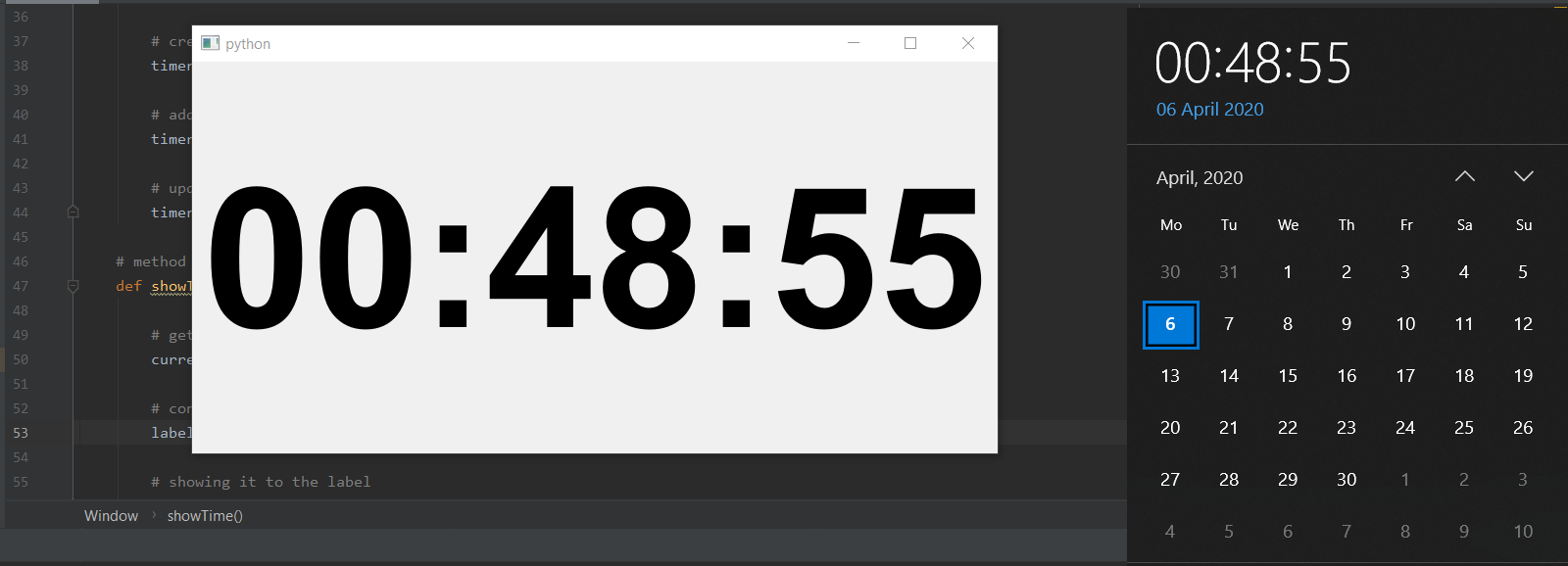En este artículo veremos cómo crear un reloj digital usando PyQt5, este reloj digital básicamente indicará la hora actual en formato de 24 horas.
Para poder crear un reloj digital tenemos que hacer lo siguiente:
1. Cree un diseño vertical.
2. Cree una etiqueta para mostrar la hora actual, colóquela en el diseño y alinéela al centro.
3. Cree un objeto QTimer
4. Agregue una acción al objeto QTimer de modo que después de cada 1 segundo se llame al método de acción.
5. Dentro del método de acción, obtenga la hora actual y muestre esa hora con la ayuda de la etiqueta.
A continuación se muestra la implementación:
# importing required librarie
import sys
from PyQt5.QtWidgets import QApplication, QWidget
from PyQt5.QtWidgets import QVBoxLayout, QLabel
from PyQt5.QtGui import QFont
from PyQt5.QtCore import QTimer, QTime, Qt
class Window(QWidget):
def __init__(self):
super().__init__()
# setting geometry of main window
self.setGeometry(100, 100, 800, 400)
# creating a vertical layout
layout = QVBoxLayout()
# creating font object
font = QFont('Arial', 120, QFont.Bold)
# creating a label object
self.label = QLabel()
# setting centre alignment to the label
self.label.setAlignment(Qt.AlignCenter)
# setting font to the label
self.label.setFont(font)
# adding label to the layout
layout.addWidget(self.label)
# setting the layout to main window
self.setLayout(layout)
# creating a timer object
timer = QTimer(self)
# adding action to timer
timer.timeout.connect(self.showTime)
# update the timer every second
timer.start(1000)
# method called by timer
def showTime(self):
# getting current time
current_time = QTime.currentTime()
# converting QTime object to string
label_time = current_time.toString('hh:mm:ss')
# showing it to the label
self.label.setText(label_time)
# create pyqt5 app
App = QApplication(sys.argv)
# create the instance of our Window
window = Window()
# showing all the widgets
window.show()
# start the app
App.exit(App.exec_())
Producción :
Publicación traducida automáticamente
Artículo escrito por rakshitarora y traducido por Barcelona Geeks. The original can be accessed here. Licence: CCBY-SA